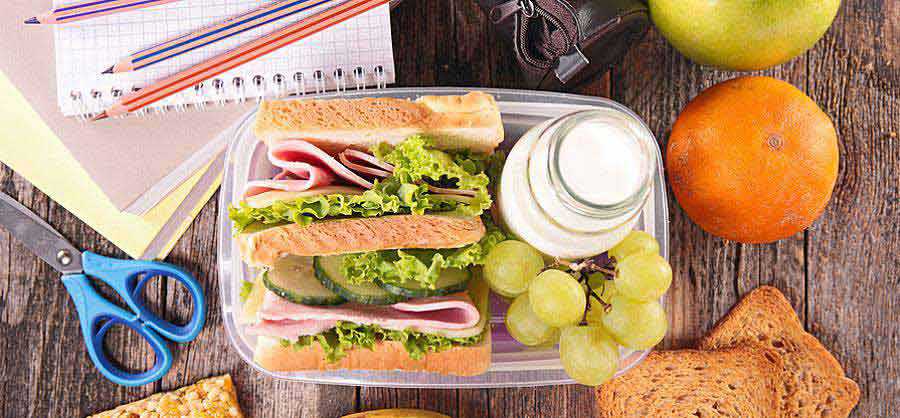Getting your kids to make healthy food choices can often feel like an uphill battle. Packing a wholesome lunch is one way to control what they eat when they're at school and help them avoid the unhealthy choices available there. But every family has their own hectic schedule, and it's not always easy to find that extra time in the morning to pack a good meal.
Luckily, you can empower your children to make healthy school lunch choices on their own. Of course, explaining nutrition to kids isn't the easiest of tasks -- you have to find ways to make it fun and engaging. Here are five tips to help you make healthy eating easy and approachable for your kids.
Get Them Excited About Fruits and Veggies
You know that fruits and vegetables will provide your kids with stable energy and help them finish the school day strong. But how do you get them to pass on the french fries and chips and opt for the carrots instead?
Instead of listing the health benefits of fruits and veggies, reframe the conversation. Children idolize superheroes and their awe-inspiring abilities -- tell them that fruits and veggies will give them their own superpowers. They'll be able to complete math problems more quickly, remember more of what they read, or score more goals in their soccer game. When they associate healthy foods with these abilities, they'll be more likely to add produce to their plate.
Expose Them to Produce Early
If your kids are already used to the fruits and veggies served at school, they'll be more comfortable choosing them at lunch time. Check the school's website, or call directly for the school lunch calendar. If it's not yet available, find copies of previous lunch schedules, which may be comparable.
Look at the most common fruits and vegetables offered, and start bringing those home from the grocery store. This way, your kids can try new foods in a comfortable environment at home, rather than feeling the pressure of trying them for the first time when they're surrounded by their peers.
Taste the Rainbow
Why not make eating fruits and vegetables a game? The American Heart Association (AHA) recommends challenging your kids to eat as many different colors of fruits and vegetables as they can. When you talk about their days, ask how many colors they ate at lunch and what food corresponds with each of those colors.
This is a fun way to get your kids eating a wide variety of fruits and vegetables, and it also offers you a chance to explain the different health benefits that come with the colors of certain nutrients. For example:
- Beta-carotene, which produces the bright-orange color of sweet potatoes and carrots, is a precursor to vitamin A and promotes healthy skin, good vision, and a robust immune system.
- Anthocyanins, responsible for the deep purple and blue colors of blueberries and cranberries, offer anti-inflammatory and anti-cancer benefits.
Choose Grilled Meats Over Fried
If your kids have a choice between grilled and fried meats, grilled will just about always be the better option, according to the AHA. Grilled meats are prepared without added breading and usually aren't cooked in as much potentially unhealthy oil as the deep-fried options.
Kids often love the crunch or flavor that fried foods offer, so play up the superpowers of grilled meats like you did with produce to make the healthy choice more enticing. Tell your kids that choosing grilled chicken breast will make them stronger and faster in their sport of choice, while fried chicken will make them feel sluggish and slow.
Wash It Down With Water or Milk
Kids often reach for the sweetness of soda or juice, but that sugar inevitably leads to a crash not long after. Tell your children about how sugary drinks affect their energy levels. Explain that while they may feel good during the sugar rush, pretty soon they'll be too tired to enjoy the rest of their day -- even recess!
Instead of sugary drinks, guide your kids toward better options such as water or milk, which provide hydration and energy without the afternoon crash.
Most importantly, make food fun. They'll be ready to learn the specifics of nutrition as they get older, but right now, it's time to get them excited to make healthy school lunch choices.




